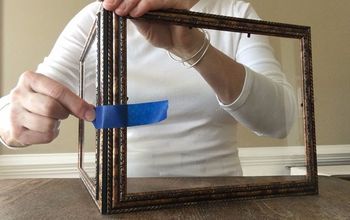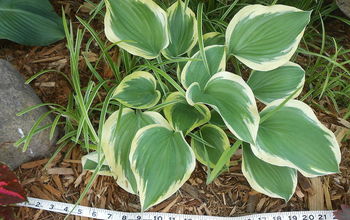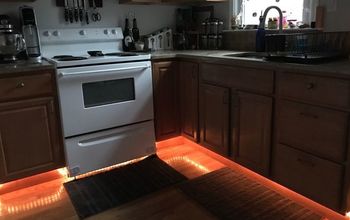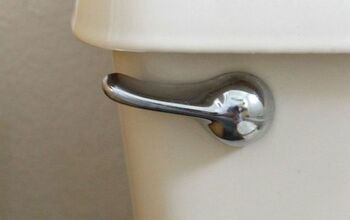How to Clean Stainless Steel Appliances, Sinks, and Cookware

Stainless steel creates a beautiful, professional look in any kitchen, so it’s no wonder that many people are using it for appliances, sinks, and cookware. But although it's wonderful to look at, stainless steel can be a challenge to clean. Since it is a delicate material, cleaning it incorrectly can give it scratches or spots. Today I’m going to give you a few tips on how to clean stainless steel appliances, sinks, and cookware. As with any delicate surface, though, please remember to test these methods in an inconspicuous spot to make sure it is safe for your items.
Cleaning Stainless Steel Appliances
When learning how to clean stainless steel appliances, you’ll notice there are usually 2 steps. You will need to remove the gunk and grime, like fingerprints, food, and grease from the surface first. This will give the appliances a smoother appearance, but it may also leave streaks. Polishing the appliances after you’ve removed the gunk and grime will restore the smooth, lustrous appearance that they had in the store.
To clean stainless steel appliances, you will need a clean rag or towel and a mild detergent or white vinegar. I personally prefer to use a damp microfiber towel and a little dish soap. The dish soap will dissolve any grease and grimy fingerprints from the appliances. If there is stuck-on food or tough gunk, you can also try using a nylon scrubber to scrub the grime off. Whatever you do, though, do not use steel wool or any scrubbers that are not specifically labeled “Non-Scratch.” Using any of these abrasive tools will create scratches in the stainless steel finish that can only be removed by paying a professional, so make sure you are using scrubbers that won’t damage your appliances.
Once the gunk and grime is removed from the appliances, it’s time to polish them. Glass cleaner, olive oil, and baby oil can all be used to polish the stainless steel. Simply dampen a paper towel or microfiber cloth with the product and wipe down the appliance. There are certain brands of appliances that are more prone to streaks than others, so if your fridge still looks streaky after using the oil method, I recommend using a professional stainless steel cleaner from a hardware store.
When no other method will work, Zep brand Stainless Steel Cleaner will get pretty much any stainless steel appliance back to like-new shine. Just spray it on a microfiber rag, rub the appliance with the “grain” of the stainless steel, and then buff away the excess polish with the dry side of the rag.
Cleaning Stainless Steel Sinks
To clean stainless steel sinks, you want to think natural and non-abrasive. It can be tempting to try and scrub stains out of your sink using harsh chemicals and rough sponges, but don’t do it! Bleach and other chemicals can cause damage to stainless steel sinks, and steel wool and other rough scrubbers can scratch the stainless steel. Instead, clean your stainless steel sink using baking soda, white vinegar, and a soft sponge. Sprinkle about 2 tablespoons of baking soda into the dry sink. Use a clean, damp sponge to rub the baking soda around the sink basin, working with the grain of the sink. After you have rubbed all parts of the sink, pour white vinegar into the sink and watch it work its bubbly magic. Once the foam has gone away, rinse the sink with water, wipe it with a dry rag, and enjoy the sparkly clean.
You can also use products like Bar Keeper’s Friend and Bon Ami to clean stainless steel sinks. They are non-scratch cleaners that are specially formulated to safely clean without scratching. Along with my sponge and rag, I also like to have an old toothbrush handy to clean the drain and other grooves in the sink.
After you get your sink all nice and clean, I advise protecting it with a plastic or rubber mat in the bottom. These little mats can be found in the kitchen storage area of stores like Target and Walmart. They are inexpensive, but will save your sink from scratches that happen easily when dishes and silverware are placed in the sink. Just make sure you remove the mat to wipe out your sink each week because the stains and food will still collect underneath the mat.
Cleaning Stainless Steel Pans
Stainless steel cookware is a beautiful addition to any cook’s kitchen, and when taken care of properly, it will last for many years. For everyday washing, it is perfectly fine to use dish soap and a soft sponge to clean your stainless steel pans. Wash them by hand, never in the dishwasher, and dry them immediately with a soft towel to prevent water spots from forming.
If you need to clean a burnt pot with food in it, put about 1 inch of water in your pan and put it back on the stove. Once it starts to boil, add 2 tablespoons of salt or 1 tablespoon of baking soda. Allow the liquid to simmer (which means very lightly boiling) for 30 minutes, adding more water so it never goes dry. Using a plastic or wooden spatula, start to scrape the bottom of the pan. Continue this process until all the food chunks have released.
If your pan has burn marks, but no food chunks, you can use plain old baking soda to clean those off. Simply sprinkle baking soda into your pan and rub in a circular motion with a clean rag or sponge. You can do this dry, or apply enough water to make a thick paste. Continue to rub until the burn marks disappear. Then rinse the pan with water and dry immediately.
If you want to add a little shine to your pans after they are clean, you can use a stainless steel polish that is specially made for cookware. This is typically available at specialty kitchen stores next to the dishwashing supplies or the stainless steel cookware displays. Just make sure not to use an industrial stainless steel cleaner on your pans. You don’t want to cook the chemicals into your food.
This post was originally published at: http://www.quickanddirtytips.com/house-home/housekeeping/how-to-clean-stainless-steel
Enjoyed the project?

Comments
Join the conversation
-
Any way to remove scratches?
 Debbie McGarrity
on May 06, 2015
Debbie McGarrity
on May 06, 2015
-
-
How about vim liquid rubbed with soft sponge??? It works
 Mohamed Nizar
on May 27, 2015
Mohamed Nizar
on May 27, 2015
-






























Frequently asked questions
Have a question about this project?